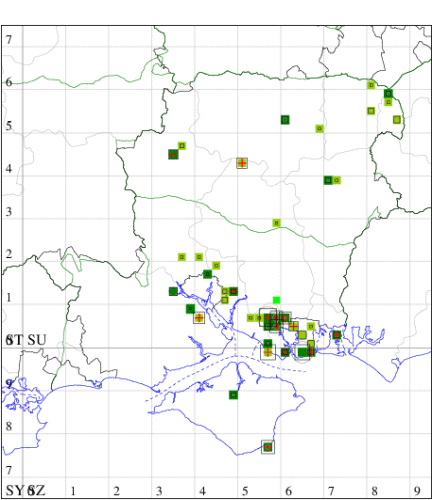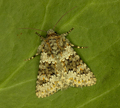Small Ranunculus
Hecatera dysodea
Checklist Number73.280 [B&F: 2165]
Verification
Record will normally be accepted but photo evidence may be required - check with CMR if not sure of identity
A Red Data Book species, on roadside verges, chalk pits, gardens, allotments and rough ground in parts of south-eastern England. Locally common at the end of the 19th Century, the species declined rapidly in the first half of the 20th Century, disappearing from the British Isles completely by 1941. It has subsequently recolonised our island and is becoming increasingly common again: following two in Gravesend, Kent, in 1997, a resident population became established in north-west Kent from 1998 onwards. There were also records in Essex and Suffolk in 1999. The first modern day records in Hampshire were in 2009, with individuals in Southsea, Fleet and Andover; 2010 saw six further sightings, ten in 2011, with similar numbers annually thereafter. The county population has two distinct centres, one in the north-east reflecting dispersion from recently established populations in Surrey, and along the south-east coast; a first for the island in 2020 was no great surprise. Larvae were found in the Andover area in 2013. Wingspan 32-36 mm. Larva feeds on Prickly Lettuce and Great Lettuce, over-wintering as a pupa.


The abundance in each month is indicated as follows:
 No records
No records Very occasional
Very occasional Irregular
Irregular Uncommon
Uncommon Off-peak, but not unusual
Off-peak, but not unusual Off-peak, but not unusual
Off-peak, but not unusual Main flight time
Main flight time| J | F | M | A | M | J | J | A | S | O | N | D | |
|---|---|---|---|---|---|---|---|---|---|---|---|---|
| Adult |  |  |  |  |  |  |  |  |  |  |  |  |
| Larval |  |  |  |  |  |  |  |  |  |  |  |  |





